Info
Subfamily: Panicoideae
Genus etymology: Melinis = Greek, derivation obscure: either from meline, resembling millet, Panicum miliaceum L., or from melas, because the caryopses are sometimes black, or from meli, honey, because of the sweet smell of some species
Species etymology: repens = "creeping" [Latin] perhaps due to the weak branches which fall over, but this grass lacks rhizomes or stolons
Photosynthetic type: C4 (warm season)
Nativity: naturalized - intentional
First recorded in Hawaiʻi: 1894
Map
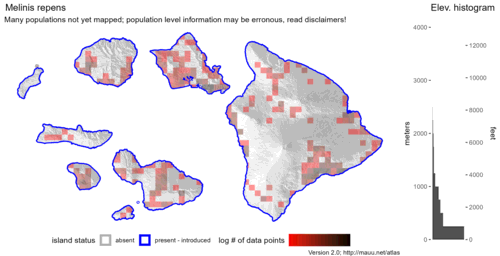

Inflorescence
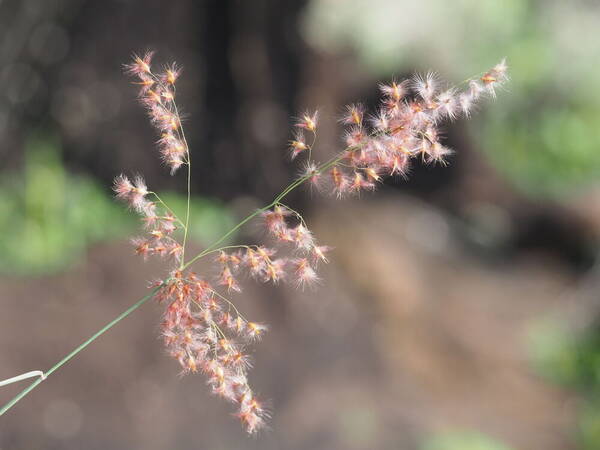
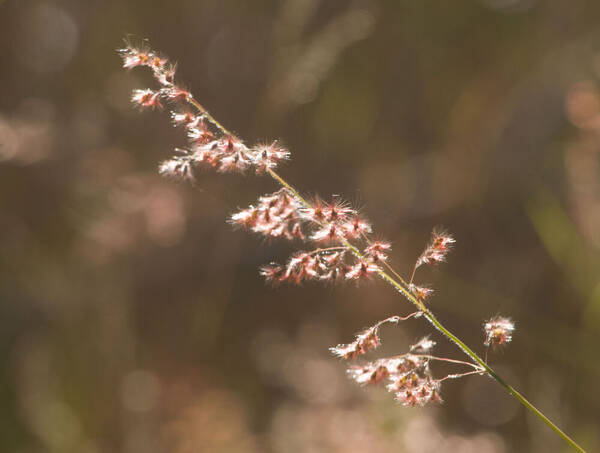
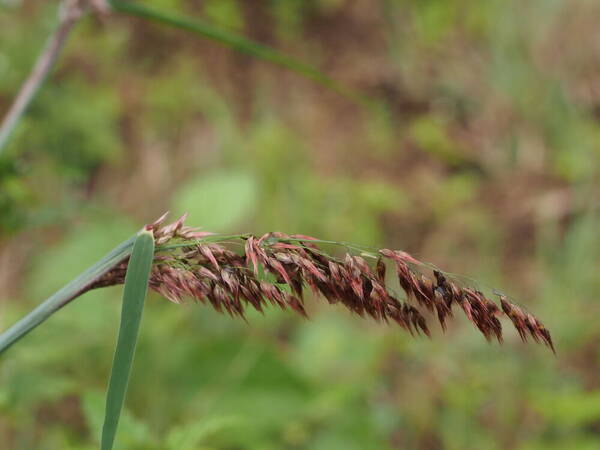
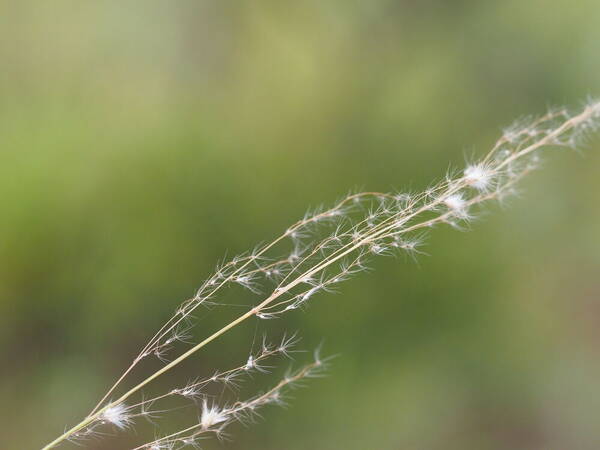
Plant
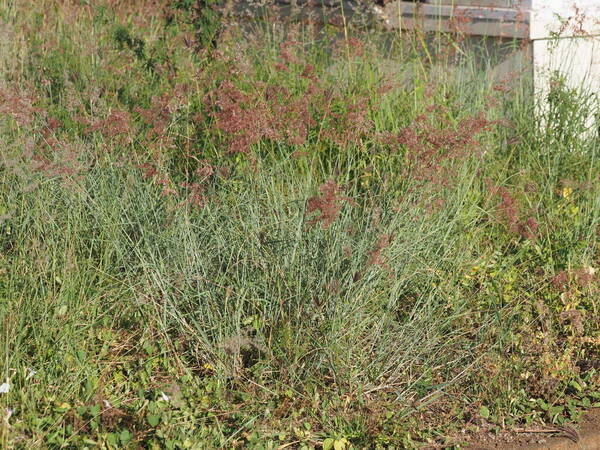
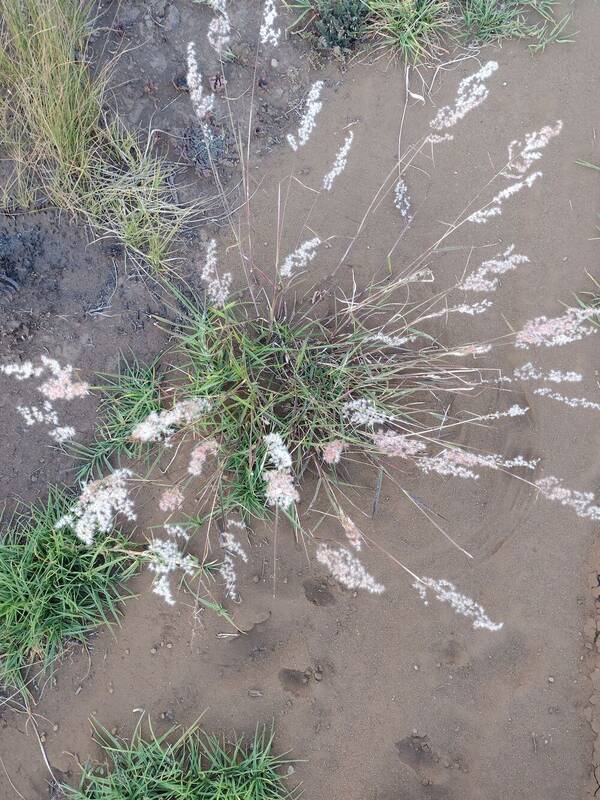
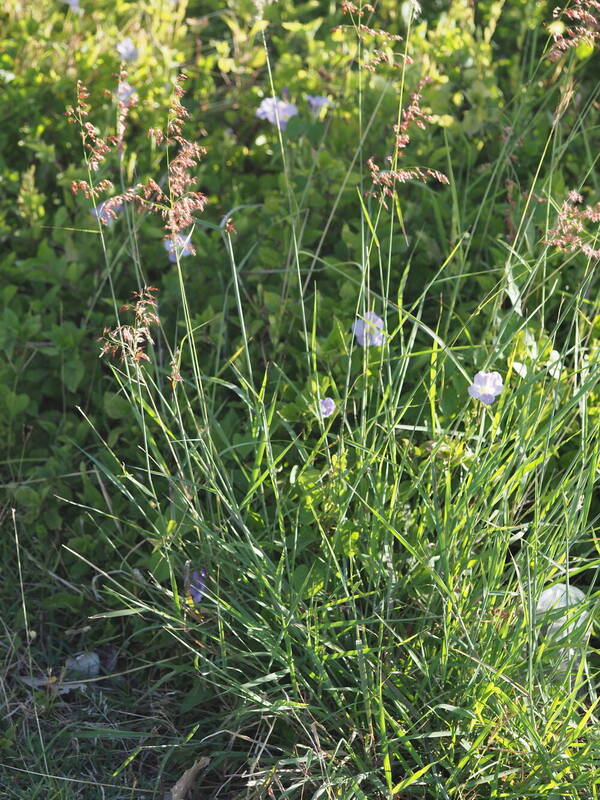
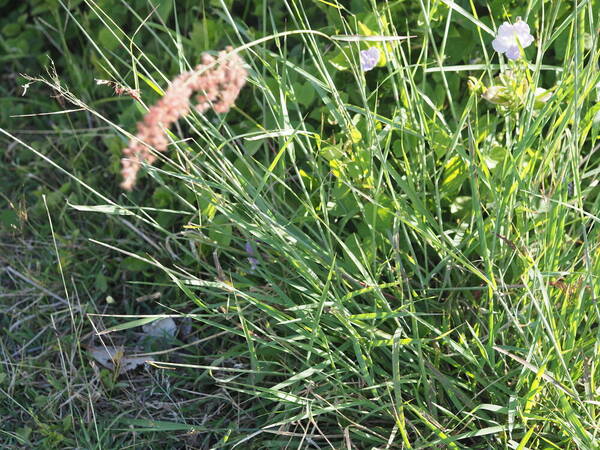
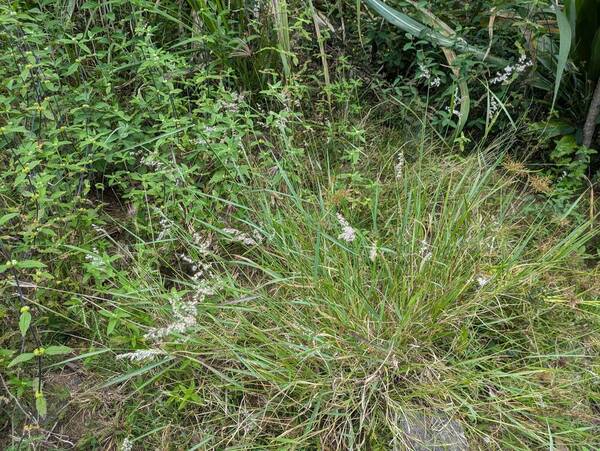
Habit
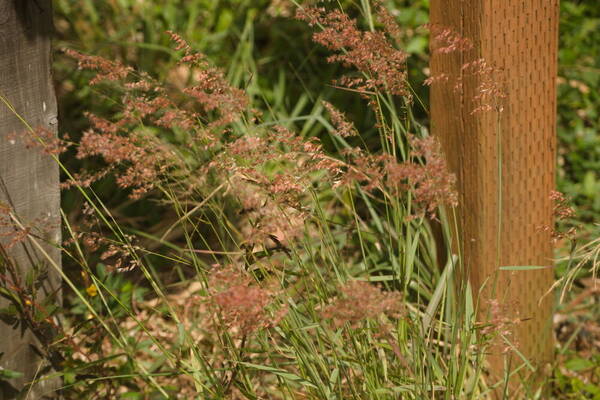
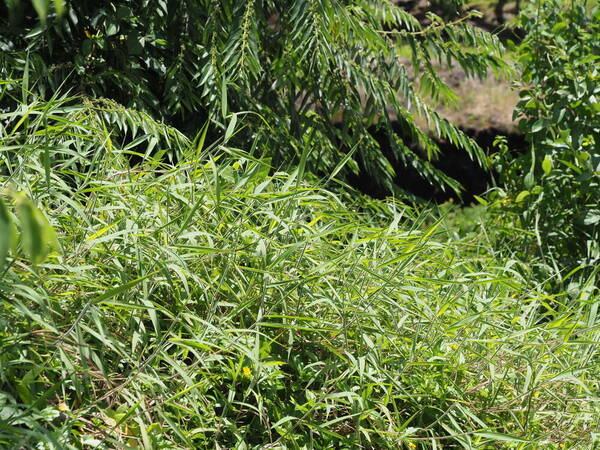
Spikelets
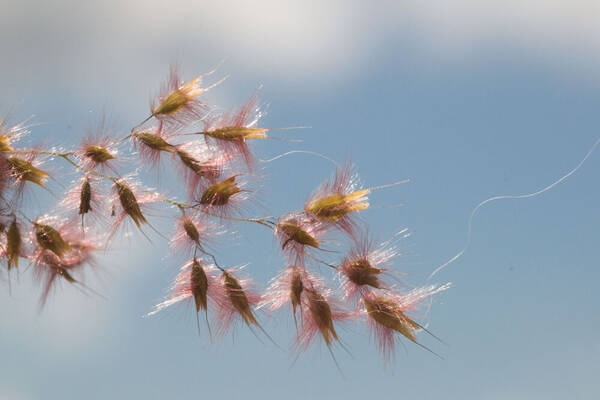
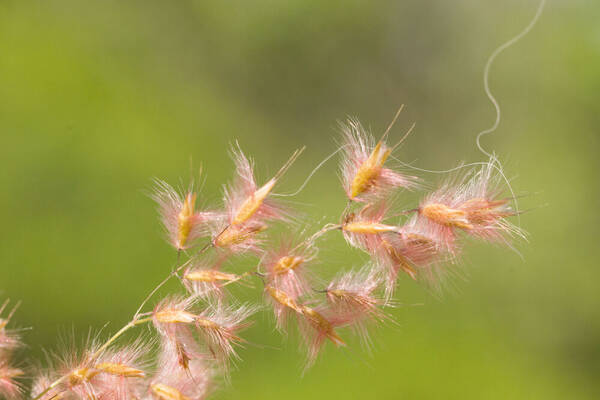
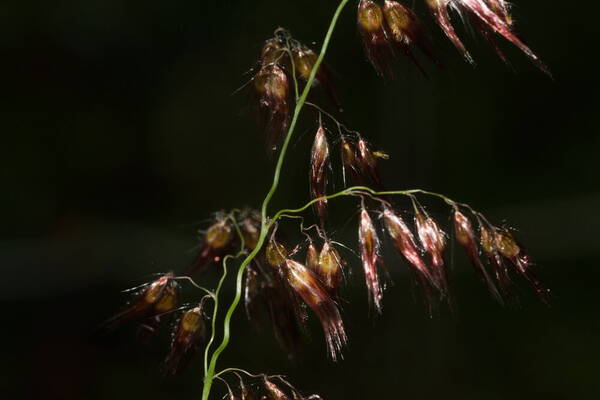
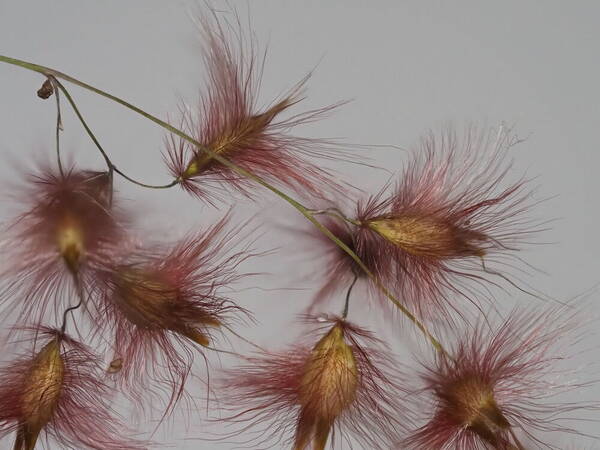
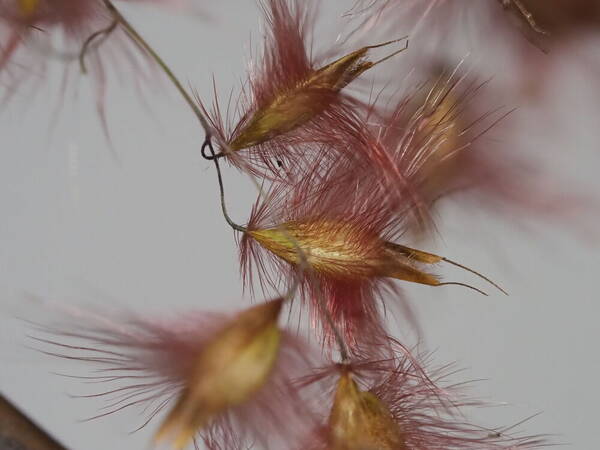
Landscape
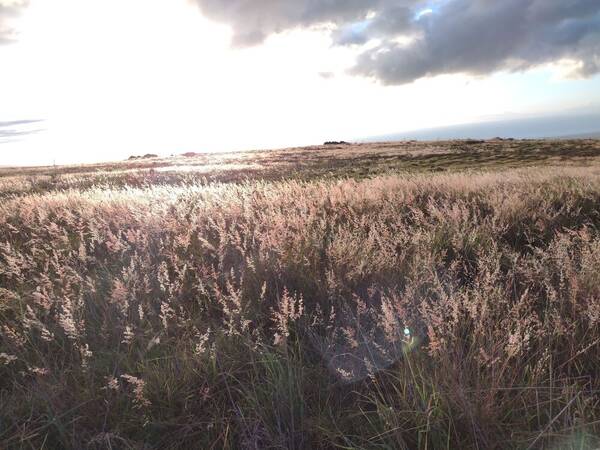
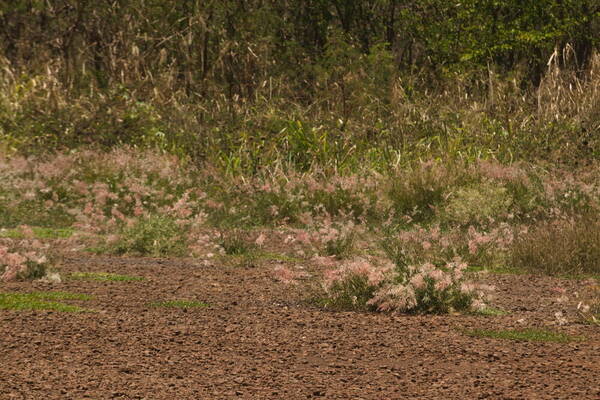
Description
Annual or loosely tufted perennial; culms 30–100 cm. high, erect or ascending. Leaf-blades flat or folded, 5–30 cm. long, 2–10 mm. wide. Panicle ovate to oblong, 5–20 cm. long, fluffy, silvery pink or purple; pedicels usually pilose at the tip. Spikelets ovate, 2.5–8.5 mm. long, villous with hairs extending 1–4 mm. beyond the tip; lower glume narrowly oblong, 0.3–3.5 mm. long, separated from the upper by an internode 0.1–1.2 mm. long; upper glume conspicuously gibbous, chartaceous, tapering to a glabrous membranous beak 1/4–1/2 its length, emarginate, mucronate or with an inconspicuous awn up to 7(–10) mm. long; lower floret ♂ or barren, its lemma narrower and less gibbous than the upper glume, its palea ciliate on the keels. Fig. 125.
(Description source: Clayton, W.D. & Renvoize, S.A. 1982. Flora of Tropical East Africa. Gramineae (Part 3). A.A. Balkema, Rotterdam. 448 pp. )
Annual or short-lived perennial up to 90 cm high.; leaves not aromatic. Panicle ovate to oblong, (6–)8–15 cm long, fluffy, silvery-pink or purple. Spikelets ovate, 2–12 mm long, usually villous with hairs extending 1–4 mm beyond the tip; lower glume narrowly oblong, (0.6–)1.5–3(–4.3) mm long, distant from the upper; upper glume thinly 5-nerved, conspicuously gibbous, chartaceous, tapering to a glabrous membranous beak 1/4–1/2 its length, emarginate, mucronate or with an inconspicuous awn up to 7(–10) mm long; lower lemma resembling the upper glume but narrower and less gibbous.
(Description source: Cope, T.A, (1995) Flora Somalia, Vol 4. Royal Botanical Gardens, Kew, London. 312 pp. )
Tufted annual to short-lived perennial. Culms 20–150 cm. high, geniculately ascending and often rooting at lower nodes. Leaf laminae 4–20(27) cm. long, 2–12(14) mm. wide, flat. Panicle (6)8–20 cm. long, broadly ovate; pedicels with a few long hairs. Spikelets 2–12 mm. long, ovate. Inferior glume (0.3)0.6–3(4.3) mm. long, narrowly ovate, 0–1-nerved, separated from the superior by an internode (0.1)0.2–1.7(2) mm. long; superior glume 5-nerved, membranous to subcoriaceous, usually gibbous on the back, hairy or glabrous, often tapering to a glabrous beak, emarginate, awned or mucronate. Inferior floret male, its lemma 5-nerved, resembling the superior glume but less gibbous, the palea ciliate on its keels.Very variable and formerly divided into 2–4 species according to hairiness of the spikelet, growth-form and length of the internode between the glumes. Hairiness and colour of the spikelet, as well as growth-form, prove to be of no taxonomic value. Four weakly separated infraspecific groups (3 in the Flora Zambesiaca region) are recognized. Typical specimens can be identified easily, but frequent intergradation occurs between the infraspecific groups.The length of the internode between the glumes varies quite continuously but, together with spikelet length, is the best character for separating the three groups. Single specimens approach M. ambigua subsp. longicauda and M.nerviglumis (introgression?). If the basal parts are missing, discrimination between M.repens and M. subglabra is hardly possible.
(Description source: Launert, E. & Pope, G.V. (eds.). 1989. Flora Zambesiaca. Volume 10. Part 3. Kew, London. 152 pp. )
Plants annuals or short-lived perennials. Culms (20)40-150 cm, decumbent, usually rooting at the lower nodes; nodes pubescent; internodes glabrous or with papillose-based hairs, hairs to 4.7 mm. Sheaths glabrous or with papillose-based hairs, hairs 0.5-4.7 mm; ligules of hairs, 0.7-2.2 mm; blades 3.6-27 cm long, 2-9(14) mm wide, flat, glabrous or pubescent, with or without papillose-based hairs. Panicles (4)6-22 cm long, (1.5)2.5-12 cm wide; primary branches to 11 cm, ends of the primary branches, secondary branches, and pedicels capillary; pedicels 0.6-5.3 mm, usually hairy distally, hairs to 6.3 mm. Spikelets 2-5.7 mm; calluses hairy, hairs to 4 mm. Lower glumes 0-1.7 mm, pubescent, sometimes with papillose-based hairs, apices rounded, truncate, or slightly cleft; upper glumes (1.9)2.3-4.9 mm, enclosing the upper florets, gibbous basally, densely pubescent, hairs to 7 mm, sometimes papillose-based, varying from white to rose or darkish purple, apices tapering, beaked, glabrous, unawned or awned, awns to 4.1 mm; lower florets staminate or sterile; lower lemmas 1.9-4.8 mm, unawned or with awns to 4.2 mm; lower paleas 0.9-4 mm; anthers (0.8)1.5-2.6 mm, orange-brown to orange; upper lemmas 1.8-2.7 mm, glabrous; anthers 3, 1.2-1.7 mm, orange-brown to orange. Caryopses 1.3-1.9 mm long, 0.6-0.9 mm wide. 2n = 36.
(Description source: Barkworth, M.E., Capels, K.M., Long, S. & Piep, M.B. (eds.) 2003. Flora of North America, north of Mexico. Volume 25. Magnoliophyta: Commelinidae (in part): Poaceae, Part 2. Oxford University Press, New York. 783 pp http://floranorthamerica.org/Melinis_repens )
Annuals or perennials; culms loosely tufted, subcoriaceous, erect or ascending, 3-10 dm tall, often many-branched, glabrous. Sheaths 7-10(-20) cm long, the lower ones sometimes papillose-pilose; ligule densely ciliate, ca. 1 mm long; blades usually glaucous, flat or folded, 5-30 cm long, 2-10 mm wide, striate, upper surface scaberulous, lower surface glabrous. Panicles fluffy, glossy, pink or purple, color fading with age, ovoid to oblong, 5-20 cm long, branches ascending, 3-9 cm long, scaberulous, pedicels usually pilose in upper part; spikelets ovate, 2.5-8.5 mm long, villous, the hairs extending 1-4 mm beyond apex; first glume narrowly oblong, 0.3-3.5 mm long, pilose, separated from second glume by an internode 0.1-1.2 mm long, second glume chartaceous, conspicuously gibbous, tapering to a glabrous membranous beak 1/4-1/2 the length of the glume, emarginate, mucronate, or with an inconspicuous awn up to 7(-10) mm long; first lemma narrower and less gibbous than second glume, first palea ciliate on the keel; second lemma ca. 2.5 mm long, short-stipitate, second palea similar to second lemma but thinner, pale green to white, smooth, glossy, 1.6-1.8 mm long, faintly 2-nerved, apex obtuse, awnless. Caryopsis pale brown, narrowly ovoid, 1.2-1.5 mm long, smooth. [2n = 18, 36.]
(Description source: O’Connor, P.J. 1990. Poaceae, pp. 1481–1604. In: Wagner W.L., Herbst D.R. & Sohmer S.H. (eds.)., Manual of the flowering plant of Hawaiʻi. Vol. 2. University of Hawaii Press & Bishop Museum Press, Honolulu )